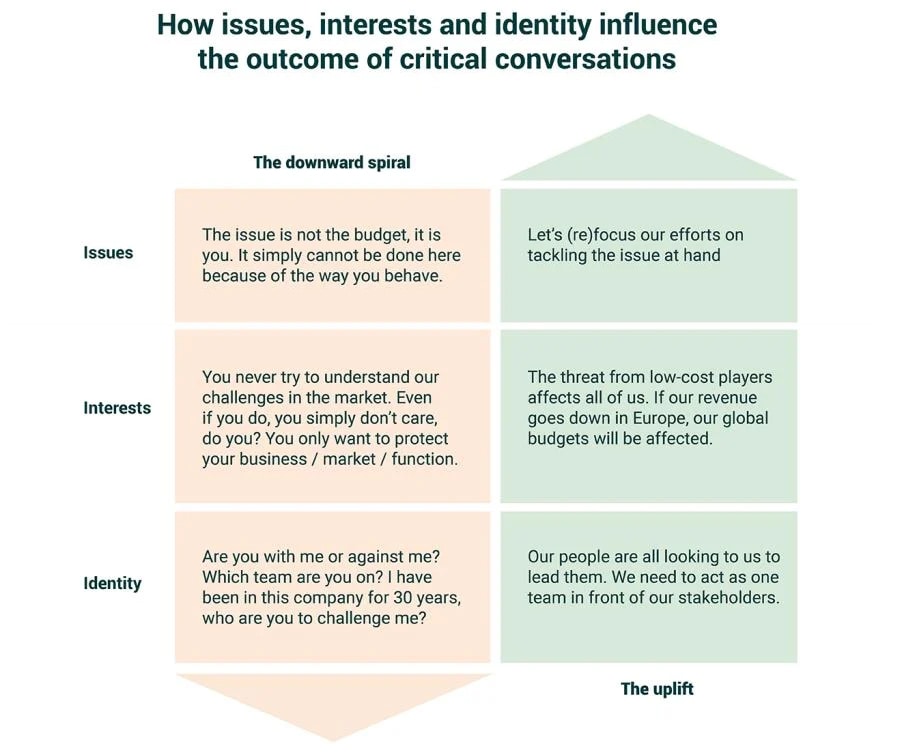
How to manage critical conversations
A framework for what to do and what to avoid when discussing critical topics with your team
 Outline a framework to guide dialogues about critical or sensitive topics, which leaders can use to turn these potentially contentious debates into productive conversations.
Image: Shutterstock
Outline a framework to guide dialogues about critical or sensitive topics, which leaders can use to turn these potentially contentious debates into productive conversations.
Image: Shutterstock
In recent years, we’ve witnessed the increasing polarisation of society, rising geopolitical tensions and mounting social upheaval. Business leaders and organisations can no longer avoid conversations about these topics. When faced with the diverse and sometimes opposing views of their teams, how can leaders effectively navigate these complex and sensitive discussions?
Let’s take the real-world example of a mid-sized pharmaceutical firm. It gathered 25 senior executives for a discussion on how to operationalise the organisation’s sustainability vision. The chief sustainability officer began by laying out the company’s commitment and strategic road map. After a few questions and comments, the chief sustainability officer left the room.
Following a few minutes of silence, one American executive piped in with a “reopening” statement. “We’ve been talking about this for three years,” he said. “A lot of effort has been put into getting a green certificate. But we are in the market and doctors do not want to pay a higher price – the only thing they care about is the efficacy of the medicine.”
Then, the chief marketing officer, who hailed from a European country, interrupted him. “I disagree. We’ve collected data from hundreds of patients. The majority care about environmental sustainability and are willing to choose a green product with a higher price.” The debate continued for almost two hours before a coffee break was called.
The mood was extremely tense around the coffee machine. Meeting attendees split into three distinct subgroups and began talking in hushed voices within their cliques. They exchanged looks and shook heads. “They always do this… so stubborn.” “Nothing will ever change their minds.”
[This article is republished courtesy of INSEAD Knowledge, the portal to the latest business insights and views of The Business School of the World. Copyright INSEAD 2024]


















